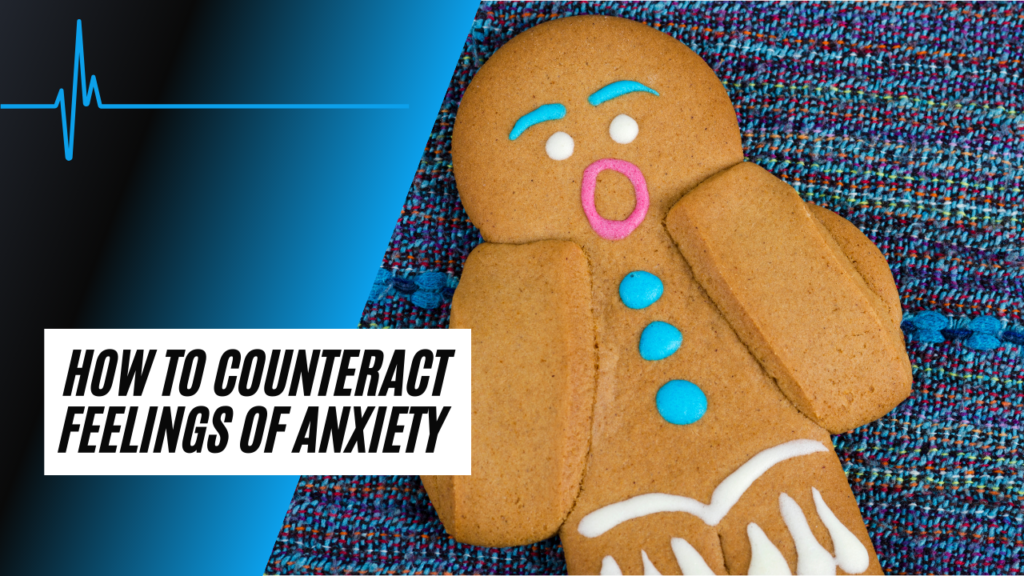Coaching Illness and Anxiety
Another emotional by-product of long-term illness we commonly see is anxiety. It is something we both used to experience a lot first-hand and still must battle against from time to time. It’s tough enough when your strength and energy levels fluctuate throughout the day, but the physical effects of anxiety such as increases in heart rate, rapid breathing, light-headedness and nausea can encumber your efforts to get through the day even further.
Anxiety itself is just not enjoyable. At times it can feel unbearable. Nobody likes that feeling that something bad is going to happen or will imminently go wrong. Sometimes you think you know what that bad event might be. Other times you can’t put your finger on it. It just seems like the other shoe is going to drop at some point.
Indeed, it may seem like there is a lot to fear when you have a long-term medical condition. There are a variety of thoughts which you might have about your illness, which can trigger anxious feelings. Examples of these may include the following:
“How will I cope with my life?”
“What if my condition deteriorates?”
“What if I never get to enjoy the things I love doing again?”
“What if I always feel this bad?”
“What If I can’t support myself?”
“What if my friends abandon me?”
These thoughts can be very crippling and fill you with dread, especially if you fixate on them heavily. Doing so will not only compromise your emotional well-being but also harm your physical health. Multiple studies have highlighted the correlation between mental and physical health. Compromising both is the last thing you need.
However, there are tools and activities which can help you counteract these thoughts. In doing so they can go a long way to alleviate many anxious feelings. Let’s look at some options for you to explore, which may help you accomplish this:
8 Mindset Techniques
 1. Identify Triggering Events
1. Identify Triggering Events
Think about the times when you felt most anxious and identify which events are likely to trigger these feelings in you again. Do you see any similarities in these events at all? Examples may include the occasions when you feel weak or tired. Alternatively, you may feel this way after receiving disappointing test results. Recognising any repeated patterns will help you to predict them in advance next time and mentally prepare.
2. Look at Your Thoughts
Next, think about what your thoughts usually are about during these events. Maybe feelings of fatigue leave you thinking that you won’t be capable of managing your daily tasks. Alternatively, disappointing test results may lead you to conclude that you will never see improvements in your health. It is important to recognise though, that these are only subjective thoughts and not actual events.
3. Thoughts vs emotions
Try to observe the impact your thoughts have upon your emotions. In this context, that emotion will be anxiety. Is there any thought you have about certain events which commonly leave you feeling anxious?
4. Look for Contrasting Evidence
You may think that you will never be able to manage or that you will always miss out on life. Using these or other examples, ask yourself if this rule of thumb is always true or if there are likely to be exceptions? If you believe the latter to be true, could you be one of those exceptions?
5. Search for The Middle Ground
 This means avoiding thinking in absolute terms. Words such as “every” or “always” are more likely to set you up for anxiety. However, seeing things less catastrophically can calm you. Maybe you will not be able to manage every day the way that you would like, but you can handle some days better than others. Maybe you will not always have to miss out on everything you enjoy but may have to forego enjoyments on occasions. Perhaps there are ways for you to modify and abbreviate certain activities so that you can participate in them to some extent.
This means avoiding thinking in absolute terms. Words such as “every” or “always” are more likely to set you up for anxiety. However, seeing things less catastrophically can calm you. Maybe you will not be able to manage every day the way that you would like, but you can handle some days better than others. Maybe you will not always have to miss out on everything you enjoy but may have to forego enjoyments on occasions. Perhaps there are ways for you to modify and abbreviate certain activities so that you can participate in them to some extent.
6. Alternative Perspectives
Consider to what extent your viewpoint is universal or if it is only subjective. What would a friend’s perspective be of your situation? Is it possible that there is another way to be viewing the situation you find yourself in?
7. Let Go of What You Can’t Control
 The reality is that there will always be aspects of life which can’t control. The same is true with or without illness. However, when you have a long-term medical condition, having good and bad days often goes with the territory. Make peace with the fact that your strength and energy levels will fluctuate. Accepting this will help you feel less anxious.
The reality is that there will always be aspects of life which can’t control. The same is true with or without illness. However, when you have a long-term medical condition, having good and bad days often goes with the territory. Make peace with the fact that your strength and energy levels will fluctuate. Accepting this will help you feel less anxious.
8. Identify What you control
In saying that, there will still be areas in your life that can still control. These can include decisions to rest, your ability to prepare for strength or energy fluctuations ahead of time, patient education, asking for support or prioritising the most important tasks. There are many other examples. Focusing solely on what you can control and acting on it will establish your sense of agency which can consequently lead you to feel less anxious.
Try these activities out, but as always, if your anxiety is acute and persists consider getting into contact with a qualified mental health specialist.


 1. Identify Triggering Events
1. Identify Triggering Events This means avoiding thinking in absolute terms. Words such as “every” or “always” are more likely to set you up for anxiety. However, seeing things less catastrophically can calm you. Maybe you will not be able to manage every day the way that you would like, but you can handle some days better than others. Maybe you will not always have to miss out on everything you enjoy but may have to forego enjoyments on occasions. Perhaps there are ways for you to modify and abbreviate certain activities so that you can participate in them to some extent.
This means avoiding thinking in absolute terms. Words such as “every” or “always” are more likely to set you up for anxiety. However, seeing things less catastrophically can calm you. Maybe you will not be able to manage every day the way that you would like, but you can handle some days better than others. Maybe you will not always have to miss out on everything you enjoy but may have to forego enjoyments on occasions. Perhaps there are ways for you to modify and abbreviate certain activities so that you can participate in them to some extent. The reality is that there will always be aspects of life which can’t control. The same is true with or without illness. However, when you have a long-term medical condition, having good and bad days often goes with the territory. Make peace with the fact that your strength and energy levels will fluctuate. Accepting this will help you feel less anxious.
The reality is that there will always be aspects of life which can’t control. The same is true with or without illness. However, when you have a long-term medical condition, having good and bad days often goes with the territory. Make peace with the fact that your strength and energy levels will fluctuate. Accepting this will help you feel less anxious.